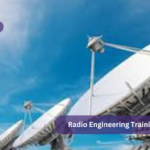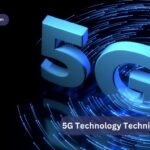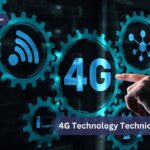In today’s fast-paced world, staying connected is essential. The internet has become a vital part of our lives. One of the key technologies enabling this connectivity is the 4G network. Understanding 4G and its fundamentals can help us appreciate the technology we often take for granted.
What is 4G?
4G stands for the fourth generation of mobile network technology. It succeeded 3G and brought many improvements. The primary goal of 4G was to provide faster data transfer speeds and more reliable internet connections. This technology has been a game-changer, allowing users to stream videos, browse the internet, and use applications without significant delays.
Evolution from 3G to 4G
Before 4G, there was 3G. The third generation of mobile networks improved on 2G by offering better data speeds and more advanced services like video calls. However, 3G had its limitations. Data transfer speeds were still relatively slow, and network reliability was a concern in many areas. This led to the development of 4G.
4G technology aimed to overcome these limitations. It introduced higher data transfer rates and reduced latency. This means that when you click a link or start a video, the response is almost immediate. The shift from 3G to 4G marked a significant leap forward in mobile technology.
Key Features of 4G
Several features define 4G technology. These features have made it the preferred choice for mobile networks around the world.
Faster Data Speeds
One of the most notable features of 4G is its speed. 4G networks can provide download speeds of up to 100 Mbps and upload speeds of up to 50 Mbps. This is significantly faster than 3G networks, which typically offer download speeds of up to 21 Mbps. With these speeds, users can stream high-definition videos, play online games, and download large files without interruption.
Lower Latency
Latency refers to the delay before a transfer of data begins following an instruction. In 4G networks, latency is much lower than in 3G networks. This means that the time it takes for data to travel from one point to another is reduced. Lower latency improves the performance of real-time applications like video calls and online gaming.
Improved Coverage and Reliability
4G networks offer better coverage and reliability compared to their predecessors. This is achieved through advanced technologies like MIMO (Multiple Input Multiple Output) and beamforming. These technologies help in maintaining a strong and stable connection, even in areas with high user density.
Enhanced Security
Security is a crucial aspect of any network technology. 4G networks incorporate advanced security features to protect users’ data. Technologies like IPsec (Internet Protocol Security) are used to encrypt data, making it difficult for hackers to intercept and misuse information.
How 4G Works
Understanding how 4G works can be quite technical. However, breaking it down into simpler terms can make it easier to grasp.
OFDM (Orthogonal Frequency Division Multiplexing)
4G networks use a technology called OFDM. This method splits a signal into multiple smaller signals that are transmitted at different frequencies. This helps in reducing interference and increasing data transmission efficiency.
MIMO (Multiple Input Multiple Output)
MIMO is another critical technology used in 4G networks. It involves using multiple antennas at both the transmitter and receiver ends. This increases the capacity of the network without needing additional bandwidth. Essentially, it allows more data to be transmitted simultaneously, boosting overall network performance.
IP-based Network
Unlike previous generations, 4G networks are entirely IP-based. This means that all data, including voice calls, is transmitted over the internet. This approach improves efficiency and allows for better integration with other internet services.
Benefits of 4G
The adoption of 4G technology has brought numerous benefits to both users and service providers.
For Users
- Better User Experience: Faster speeds and lower latency result in a smoother and more enjoyable experience. Streaming videos, browsing the internet, and using online applications are more seamless.
- Access to Advanced Services: 4G enables the use of advanced services like high-definition video calls, online gaming, and cloud computing. These services were either impossible or impractical with older network technologies.
- Mobility: Users can stay connected while on the move. Whether commuting, traveling, or working remotely, 4G ensures a stable internet connection.
For Service Providers
- Increased Revenue: The demand for high-speed internet has led to increased data usage. Service providers benefit from this increased demand, as it translates to higher revenue.
- Cost Efficiency: The IP-based nature of 4G networks allows for more efficient use of resources. This can reduce operational costs for service providers.
- Competitive Advantage: Offering 4G services gives providers a competitive edge. Customers are more likely to choose a provider that offers fast and reliable internet services.
Challenges and Limitations
Despite its many advantages, 4G technology also has its challenges and limitations.
Infrastructure Costs
Building and maintaining 4G infrastructure is expensive. Service providers need to invest heavily in network equipment and technologies. This can be a significant barrier, especially in developing regions.
Battery Consumption
Devices that use 4G networks tend to consume more battery power. This is because high-speed data transmission requires more energy. Users often find their devices running out of battery more quickly when using 4G.
Spectrum Availability
The availability of radio spectrum is another challenge. The spectrum is a limited resource, and there is competition for its use. Ensuring that there is enough spectrum to support growing demand is a constant struggle.
The Future of 4G
While 5G is the latest buzz in the world of mobile networks, 4G is not going anywhere soon. Many regions around the world still rely heavily on 4G networks. Additionally, 4G will continue to serve as a backbone for 5G networks, especially in areas where 5G infrastructure is not yet fully developed.






